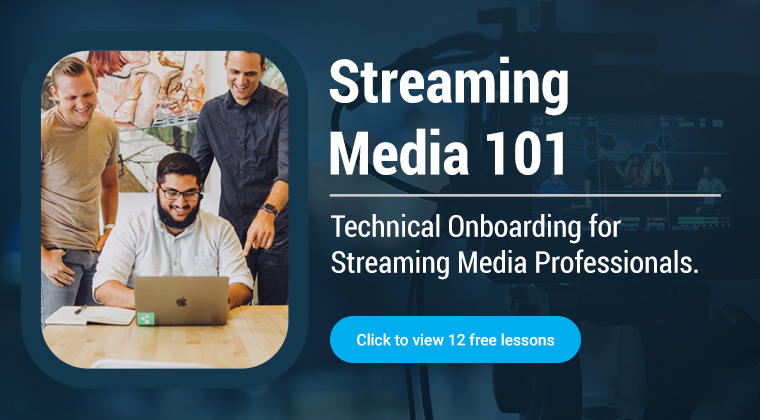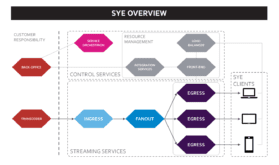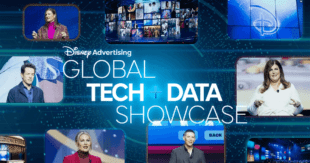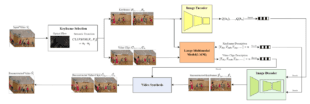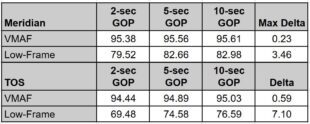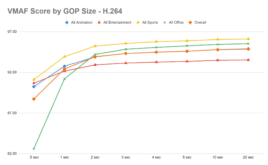It started with a simple observation: Fox plans to upscale a 1080p HDR feed to 4K for the Super Bowl LIX broadcast. The comment came from Dan Rayburn, who shared details about Fox’s planned encoding ladder, including a maximum bitrate of 15 Mbps for 4K delivery. This revelation prompted a lively LinkedIn discussion among industry experts, exploring the decision’s technical, …
Read More »Sye: The Best Low-Latency Tech You’ve Never Heard Of
When your service spends a fortune on sports rights, the pressure on your technology team to deliver a flawless viewing experience is immense. It’s not just low latency; it’s synchronization across a range of playback devices driven by second-screen experiences and crisp, hiccup-free ad delivery. When it comes to delivering this type of experience, Amazon Prime Video has emerged as …
Read More »The Future of Targeted Ads: Lessons from Disney’s Ad Tech Evolution
As third-party cookies are phasing out, the race to refine first-party data strategies is on, and Disney is leading the charge. At CES 2025, Nadine Krefetz, contributing editor at Streaming Media, captured the key elements of Disney’s approach in her article, “CES 2025: Disney Ad Tech, Ad Targeting, and Ad Buying.” The piece provides an insightful glimpse into how Disney …
Read More »The New Face of FAST: How Original Content Is Redefining Free Streaming
When Free Ad-Supported Streaming TV (FAST) first emerged, its channels quickly became known as the home of dated, recycled TV shows and movies—free entertainment that offered volume but little innovation. As Bruce might have said, 57 Channels (And Nothin’ On). Today, that perception is rapidly changing. Platforms like Tubi and The Roku Channel are investing heavily in original content, reshaping …
Read More »Cracking the Code(c): It’s All About the Implementation
Free Webinar: Cracking the Code(c): It’s All About the Implementation January 30, 2025 – 16:00 GMT/11:00 EST/08:00 PST Last fall, I published a post called “There Are No Codec Comparisons. There Are Only Codec Implementation Comparisons.” The basic premise was stated in the conclusion, which reads, “the key point is that unless the study’s testing schema and codec selection aligns …
Read More »CSAI vs SSAI in Video Ad Insertion: A Comprehensive Guide with Recommendations
Introduction Ad insertion technologies play a crucial role in monetization strategies. Two primary methods dominate this space: Client-Side Ad Insertion (CSAI) and Server-Side Ad Insertion (SSAI). Understanding the differences, benefits, and challenges can help content providers optimize their ad delivery for user experience and revenue generation. Overview of Ad Insertion Ad insertion is the process of integrating advertisements into video …
Read More »DCVC-B: A New Deep Learning Codec for Efficient B-Frame Compression
In a recent white paper titled Bi-Directional Deep Contextual Video Compression (DCVC-B), researchers Xihua Sheng, Li Li, Dong Liu, and Shiqi Wang proposed a new approach to enhancing B-frame compression for video encoding. The authors assert that their scheme “achieves an average reduction of 26.6% in BD-Rate compared to the reference software for H.265/HEVC under random access conditions” and even …
Read More »M3-CVC: A Glimpse into the Future of AI-Driven Video Compression
A new AI-based codec proved 18% more efficient than VVC but substantial decoding requirements will limit short-term commercial application. Here’s a summary of the white paper. In December 2024, researchers from Fudan University introduced M3-CVC, an AI-based video compression framework that combines large multimodal models (LMMs) for semantic understanding and conditional diffusion models (CDMs) for high-fidelity reconstruction. The framework employs …
Read More »Comparing Fixed GOPs to Variable GOPs with I-Frames at Scene Changes
I first encountered the line, “Anything worth doing is worth overdoing,” in the Robert Heinlein novel Time Enough for Love. I bring this up because this is my third recent article on GOP size, and I think I’m close to beating this topic into the ground. I’ll let you be the judge. To recount, I reported on testing in an …
Read More »Real-World Perspectives on Choosing the Optimal GOP Size
One of the most fundamental encoding decisions is the size of the Group of Pictures (GOP) or the frequency of I-frames within an encoded file. I-frames, also known as keyframes, are the starting points for groups of pictures, consisting of I-, B-, and P-frames. Traditionally, the GOP size is directed by adaptive bitrate streaming considerations, such as ensuring an I-frame …
Read More » Streaming Learning Center Where Streaming Professionals Learn to Excel
Streaming Learning Center Where Streaming Professionals Learn to Excel

